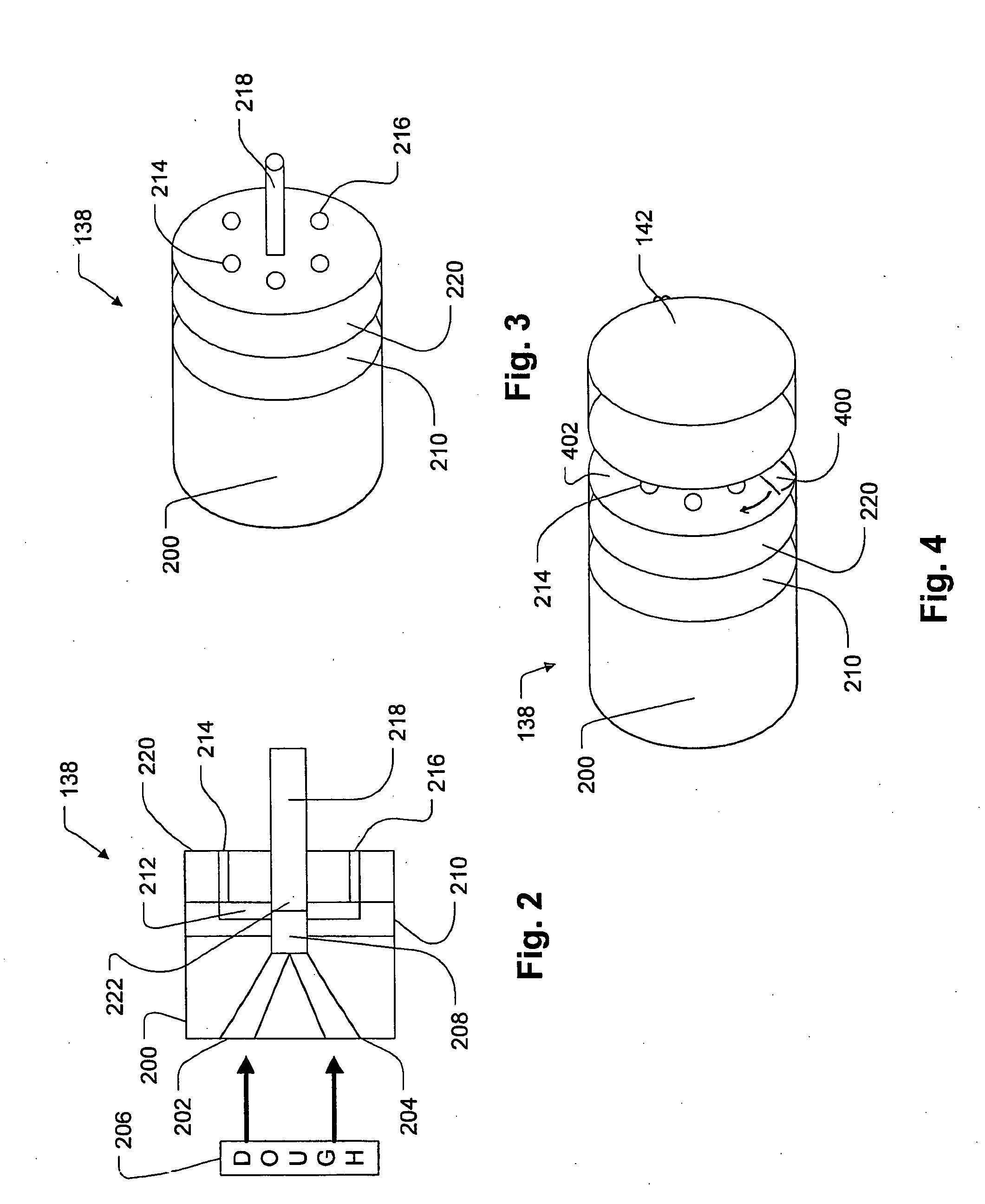Expanded products with high protein content
- Summary
- Abstract
- Description
- Claims
- Application Information
AI Technical Summary
Benefits of technology
Problems solved by technology
Method used
Image
Examples
example 2
Wheat Protein+Modified Wheat Starch
A. Extrusion Conditions
[0076] Extrusion Profile: #2
[0077] Extrusion Temperature in cylindrical head sections 102, 104, 106, and die assembly 126: 45-91-95-98° C.
[0078] Extrusion Pressure: 6190 kPa
[0079] Extrusion Motor Load: 60%
[0080] Extrusion Speed: 325 rpm
[0081] Water was added to the dry mix during extrusion through the extruder barrel. The dry feed rate ranged from 105 to 130 kg / hr, and water feed rate ranged from 10 to 26 kg / hr. Vinegar was fed into the extruder preconditioner at approximately 2 kg / hr.
B. Wheat Crisp RecipeIngredientPercent Wt.Arise 8000 ™60Midsol Krisp ™38.296Sodium Bicarbonate0.5Sodium Aluminum Phosphate0.25Sodium Aluminum Sulfate0.25Calcium Aluminum Phosphate0.25BHA0.002BHT0.002Water15%Vinegar 2%
[0082]
C. Final Product PropertiesPropertyValueMoisture Content (% wb)2.63Bulk Density (g / cc)-(lb / ft3)0.141-8.790Protein (N × 6.25 as is)57.29TDF (%)1.1
[0083]FIG. 7 shows a plurality of wheat crisps made according to this e...
example 3
Wheat Protein+Wheat Flour
A. Extrusion Conditions
[0084] Extrusion Profile: #2
[0085] Extrusion Temperature in cylindrical head sections 102, 104, 106, and die assembly 126: 45-92-95-92° C.
[0086] Extrusion Pressure: 7200 kPa
[0087] Extrusion Motor Load: 64%
[0088] Extrusion Speed: 350 rpm
[0089] Water was added to the dry mix during extrusion through the extruder barrel. The dry feed rate ranged from 105 to 130 kg / hr, and water feed rate ranged from 10 to 26 kg / hr. Vinegar was fed into the extruder preconditioner at approximately 2 kg / hr.
B. Wheat Crisp RecipeIngredientPercent Wt.Arise 8000 ™60Wheat Flour (high protein)38.296Sodium Bicarbonate0.5Sodium Aluminum Phosphate0.25Sodium Aluminum Sulfate0.25Calcium Aluminum Phosphate0.25BHA0.002BHT0.002Water15%Vinegar 2%
[0090]
C. Final Product PropertiesPropertyValueMoisture Content (% wb)1.75Bulk Density (g / cc)-(lb / ft3)0.192-12.00Protein (N × 6.25 as is)61.50TDF (%)1.0
[0091]FIG. 10 shows a SEM micrograph at 200 μm magnification showing ...
example 4
Wheat Protein+Potato Starch
A. Extrusion Conditions
[0092] Extrusion Profile: #2
[0093] Extrusion Temperature in cylindrical head sections 102, 104, 106, and die assembly 126: 45-90-95-92° C.
[0094] Extrusion Pressure: 6890 kPa
[0095] Extrusion Motor Load: 73%
[0096] Extrusion Speed: 350 rpm
[0097] Water was added to the dry mix during extrusion through the extruder barrel. The dry feed rate ranged from 105 to 130 kg / hr, and water feed rate ranged from 10 to 26 kg / hr. Vinegar was fed into the extruder preconditioner at approximately 2 kg / hr.
B. Wheat Crisp RecipeIngredientPercent Wt.Arise 8000 ™60Potato Starch38.296Sodium Bicarbonate0.5Sodium Aluminum Phosphate0.25Sodium Aluminum Sulfate0.25Calcium Aluminum Phosphate0.25BHA0.002BHT0.002Water15%Vinegar 2%
[0098]
C. Final Product PropertiesPropertyValueMoisture Content (% wb)1.77Bulk Density (g / cc)-(lb / ft3)0.169-10.58Protein (N × 6.25 as is)59.84TDF (%)0.8
[0099]FIG. 12 shows a SEM micrograph at 200 μm magnification showing a substanti...
PUM
 Login to View More
Login to View More Abstract
Description
Claims
Application Information
 Login to View More
Login to View More - R&D
- Intellectual Property
- Life Sciences
- Materials
- Tech Scout
- Unparalleled Data Quality
- Higher Quality Content
- 60% Fewer Hallucinations
Browse by: Latest US Patents, China's latest patents, Technical Efficacy Thesaurus, Application Domain, Technology Topic, Popular Technical Reports.
© 2025 PatSnap. All rights reserved.Legal|Privacy policy|Modern Slavery Act Transparency Statement|Sitemap|About US| Contact US: help@patsnap.com



